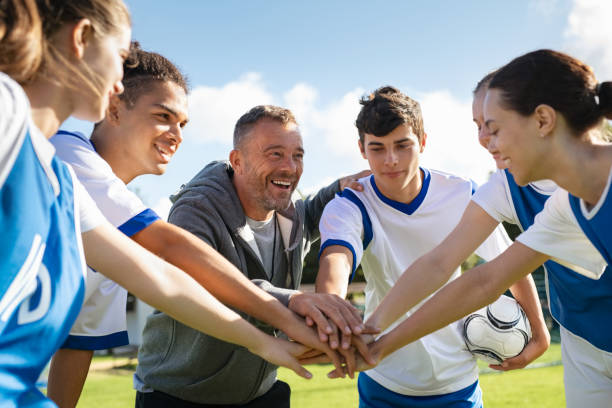Youth Development Programs That Build Local Talent
Youth development programs focused on structured athletics can create pathways for local talent by combining coaching, conditioning, and community resources. Effective initiatives blend practical training, nutrition guidance, and accessible venues with talent identification and long-term planning to help young people progress safely and sustainably.

How does athletics benefit youth development?
Organized athletics provide young people with physical conditioning, teamwork experience, and structured goals that support personal growth. Regular participation improves cardiovascular health and motor skills and reinforces habits such as punctuality and discipline. For communities, athletics programs create local services that offer safe spaces and consistent schedules, connecting schools, clubs, and community centers. When paired with age-appropriate training and clear progress metrics, athletics become a platform for both broad participation and the early identification of committed youth who may benefit from additional coaching or scouting attention.
What role does coaching and training play?
Coaching and training are central to turning general interest into measurable improvement. Quality coaching emphasizes technique, periodized training plans, and individual conditioning that account for physical development and workload. Coaches who coordinate with local services such as schools, clubs, and healthcare providers can integrate rehabilitation protocols and nutrition advice into training cycles. Coaching also includes mentorship—helping athletes set realistic goals, understand performance analytics, and balance sport with education. Certification and ongoing professional development for coaches strengthen program reliability and protect athlete welfare.
How does nutrition influence performance and recovery?
Nutrition is a foundational component of performance, recovery, and long-term athlete health. Youth programs should provide accessible nutrition education covering balanced meals, hydration, and timing around training and competition. Simple interventions—collaborations with local services, workshops for families, and school meal improvements—can reduce barriers. Nutrition plans tailored to growth stages support conditioning and minimize injury risk, while partnerships with dietitians or community health providers bring evidence-based guidance into everyday practice. Embedding nutrition into program curricula helps young athletes build habits that benefit both sport performance and general wellbeing.
How can analytics and wearables aid progress?
Performance analytics and wearables offer objective data to guide training load, monitor recovery, and reduce overuse. Local programs can use basic metrics—heart rate, duration, perceived exertion, and simple GPS tracking—to inform session design and individual conditioning. Analytics should be used responsibly: as a tool for coaches and medical staff rather than a replacement for observation and dialogue. Affordable wearable options and open-source analytics platforms make data-driven approaches accessible for community programs, enabling evidence-based decisions about training progression and talent identification without requiring high-end broadcast or commercial systems.
How are injury prevention and rehab integrated locally?
A proactive approach to injury and rehab reduces long-term attrition among youth athletes. Programs in your area should incorporate screening for movement dysfunction, periodized workloads, and education on pain vs. injury. When injuries occur, clear referral pathways to local rehab providers and coordinated return-to-play protocols are vital. Integrating physical therapists or athletic trainers into program networks—either through partnerships or rotating clinics—helps ensure continuity of care. Emphasizing rehabilitation and gradual reconditioning preserves athlete development and demonstrates that long-term participation matters more than short-term results.
How do scouting and sustainability support lasting talent pipelines?
Scouting in youth development should prioritize potential and context over single-event performance. Local scouting that samples across community venues, schools, and clubs uncovers diverse talent and reduces selection bias. Sustainability in programs means stable funding, facility maintenance, volunteer development, and environmental considerations for venues. Broadcast and outreach—when used ethically—can increase visibility and community support, but grassroots scouting and mentorship remain the most reliable routes to long-term talent growth. Embedding scouting within educational and social development frameworks helps keep athlete welfare central.
Conclusion
Building local youth talent requires a deliberate mix of athletics, coaching, nutrition, analytics, and healthcare coordination. Programs that connect qualified coaches, accessible venues, and community resources create resilient pathways for development while protecting young people’s wellbeing. Emphasizing data-informed training, injury prevention, and inclusive scouting practices promotes sustainability and broad access. For communities worldwide, the most durable progress comes from programs that value long-term conditioning, education, and integrated local services over short-term competitive gains.





